Ask Ethan: Could Matter Escape The Event Horizon During A Black Hole Merger?

Nothing can escape from a black hole… but could another black hole pull something out?
Once you fall into the event horizon of a black hole, you can never escape. There’s no speed you could travel at, not even the speed of light, that would enable you to get out. But in General Relativity, space gets curved by the presence of mass and energy, and merging black holes are one of the most extreme scenarios of all. Is there any way that you could fall into a black hole, cross the event horizon, and then escape as your black hole’s event horizon gets distorted from a massive merger? That’s the question of Chris Mitchell, who asks:
If two black holes merge, is it possible for matter that was within the event horizon of one black hole to escape? Could it escape and migrate to the other (more massive black hole)? What about escape to outside of both horizons?
It’s a crazy idea, to be certain. But is it crazy enough to work? Let’s find out.
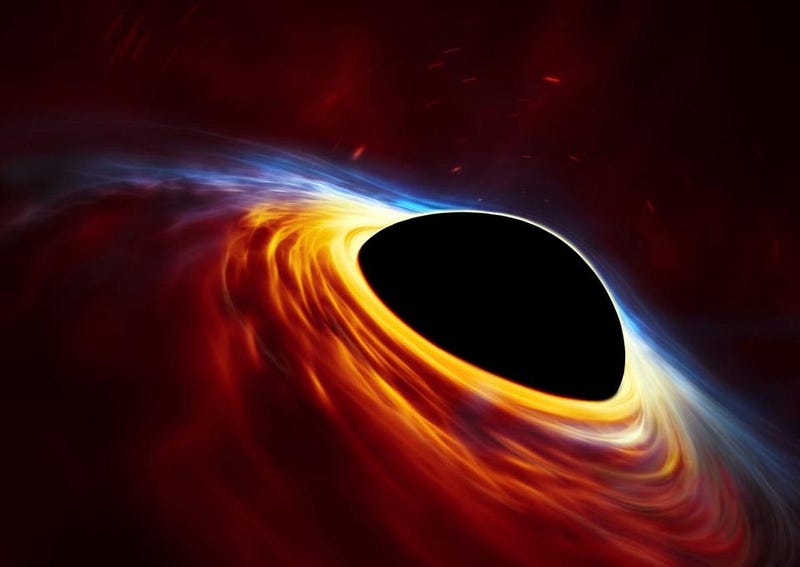
The way you form a black hole is typically from the collapse of a massive star’s core, either in the aftermath of a supernova explosion, a neutron star merger, or via direct collapse. As far as we know, every black hole is formed out of matter that was once a part of a star, and so in many ways black holes are the ultimate stellar remnant. Some black holes form in isolation; others form as part of a binary system or even one with multiple stars. Over time, black holes can not only inspiral and merge, but devour other matter that falls inside the event horizon.
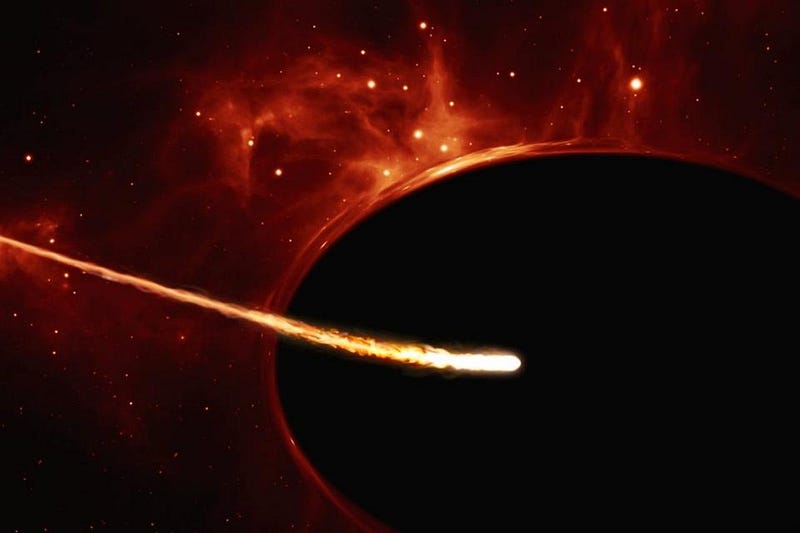
When anything crosses into a black hole’s event horizon from the outside, that matter is immediately doomed. Inevitably, in a matter of mere seconds, it will find itself encountering the singularity at the center of a black hole: a single point for a non-rotating black hole, and a ring for a rotating one. The black hole itself will have no memory of which particles fell in or what their quantum state was. Instead, all that will remain, information-wise, is what the total mass, charge, and angular momentum of the black hole now is.
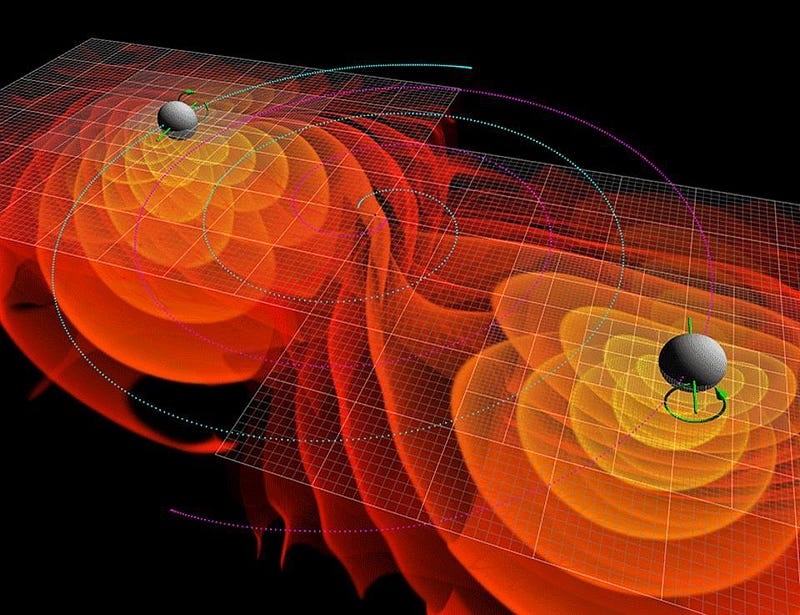
So you might envision a scenario, then, where matter falls into a black hole during the final pre-merger stages, when one black hole is about to combine with another. Since black holes are always expected to have accretion disks, and throughout interstellar space there’s material simply zipping through, you should have particles crossing the event horizon all the time. That part’s a no-brainer, and so it makes sense to consider a particle that’s just entered the event horizon prior to the final moments of a merger.
Could it possibly escape? Could it “jump” from one black hole to the other? Let’s examine the situation from a spacetime perspective.
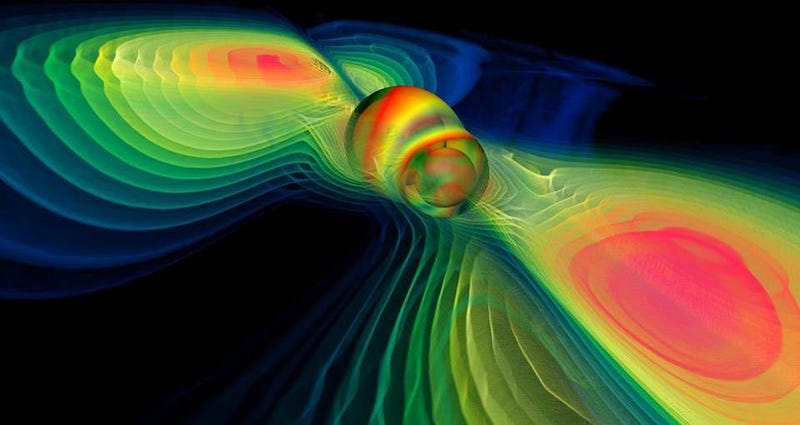
When two black holes merge, they do so only after a long period of inspiral, where energy is radiated away via gravitational waves. Leading up to the final pre-merger moments, energy is radiated away. But that doesn’t cause the event horizon of either black hole to shrink; rather, that energy comes from spacetime in the center-of-mass region getting more and more heavily deformed. It’s the same as if you stole energy away from the planet Mercury; it would orbit closer to the Sun, but no properties of Mercury or the Sun would need to change.
However, when the final moments of the merger are upon us, the event horizons of the two black holes do get deformed by the gravitational presence of one another. Fortunately, numerical relativists have already worked out exactly how this merger affects the event horizons, and it’s spectacularly informative.
Despite the fact that up to ~5% of the total pre-merger mass of the black holes can be radiated away in the form of gravitational waves, you’ll notice that the event horizons never shrink; they simply grow a connection, distort a little bit, and then increase in total volume. That last point is important: if I have two black holes of equal mass, their event horizons take up a certain amount of volume in space. If I merge them to create a single black hole of double the mass of the two originals, the amount of volume taken up by the event horizon is now four times the original volume of the combined black holes. The mass of a black hole is directly proportional to its radius, but volume is proportional to radius cubed.
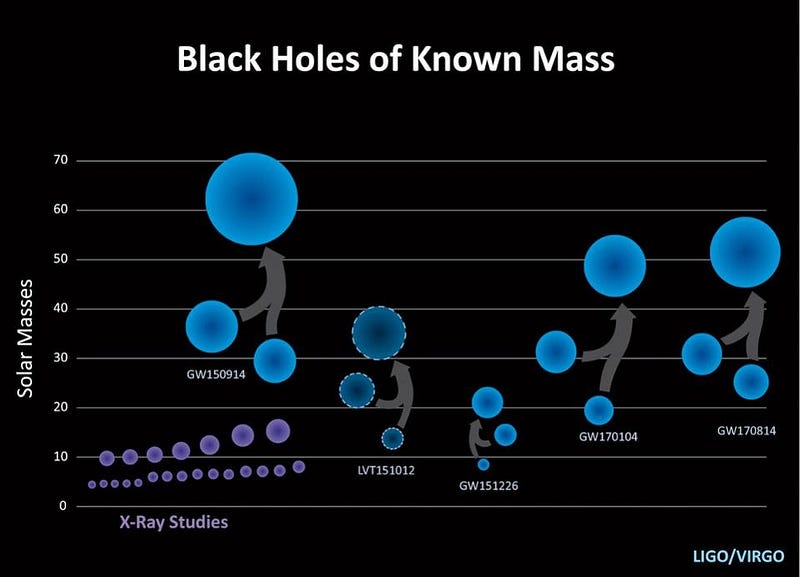
As it turns out, even if you kept a particle as close to stationary inside a black hole as possible, and made it fall towards the singularity as slowly as possible, there’s no way for it to get out. The total volume of the combined event horizons during a black hole merger goes up, not down, and no matter what the trajectory of an event-horizon-crossing particle is, it’s forever destined to be swallowed by the combined singularity of both black holes together.
In many collision scenarios in astrophysics, there are ejecta, where matter from inside an object escapes during a cataclysmic event. But in the case of merging black holes, everything from inside remains inside; most of what was outside gets sucked in; and only a little bit of what was outside could conceivably escape. Once you fall in, you’re doomed, and nothing you throw at that black hole — even another black hole — will change that!
Submit your Ask Ethan questions to startswithabang at gmail dot com!
Ethan Siegel is the author of Beyond the Galaxy and Treknology. You can pre-order his third book, currently in development: the Encyclopaedia Cosmologica.




